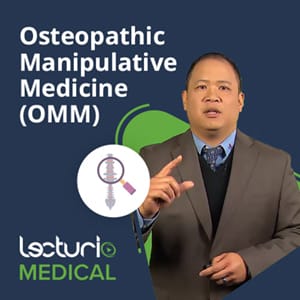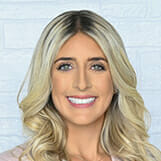What is Osteopathic Medicine?
How to become a DO
If you are interested in pursuing a medical degree, you might be asking yourself: What are the different pathways to doing so? In the United States, there are currently two pathways to becoming a licensed physician: either studying allopathic medicine and obtaining your degree as a Medical Doctor (MD), or studying osteopathic medicine and obtaining your degree as a Doctor of Osteopathic Medicine (DO). In order to enroll in a doctorate program, you must first complete an undergraduate degree and the required premedical coursework. This includes courses such as Biology, Chemistry, and Anatomy.
MD vs DO pathway
After obtaining a bachelor’s degree, MDs and DOs both complete 4 years of medical education before they obtain their doctorate. Both degree pathways result in an unrestricted license to practice medicine. This includes activities such as prescribing medications, performing surgery, and treating patients in all 50 states. DOs can practice medicine in any medical specialty, and they are required to complete a residency in the specialty of their choice. This educational format and residency training exactly mirrors the MD pathway.
The only difference is that DOs will complete additional training in OMM.

Ace the COMLEX® Level 1
with Lecturio
Osteopathic medicine defined
DOs are trained in all of the modalities of allopathic medicine, but are taught to take a more holistic approach to treating patients.
They learn to look at the person as a whole instead of only treating symptoms. DOs aim to get to the root cause of disease and address these underlying issues. Osteopathic physicians take into account a person’s mind, body, and spirit when treating a disease.
There is a strong emphasis on communication throughout osteopathic education. This assists osteopathic physicians in effectively discussing sensitive information with people from diverse backgrounds. They are also taught to integrate the patient into the healthcare team and view them as a partner in achieving a patient’s health goals. Osteopathic physicians will focus on including their patients in health care decisions and keeping them informed on all possible treatment options, whether they be conservative lifestyle changes or major decisions such as surgical treatment. Lastly, osteopathic physicians focus on prevention of disease by counseling patients on lifestyle choices such as diet and physical activity.
History of Osteopathic Medicine
Osteopathic medicine was first founded in 1892 in Kirksville, Missouri, by Dr. Andrew Still. Dr. Still is often referred to as the father of Osteopathic Medicine. Dr. Still was a keen observer and forward thinker. He recognized issues in the medical field that he wanted to change. He rejected the conventional medical practices of the 19th century, which included bloodletting, dosing with mercury, and blistering. He thought these practices were ineffective and found that they could often be harmful to patients. Instead, Dr. Still founded a philosophy of medicine based on the idea that all of the body’s systems work in unison to keep the body in balance. His main focus in his new philosophy of medicine was on preventative medicine, treating the body as a whole, and utilizing osteopathic manipulative medicine to assist the body’s innate ability to heal itself. He believed the musculoskeletal system was an essential component of maintaining health, and utilized this system through the application of OMM to influence functions in the body.
Although Dr. Still opened the first osteopathic medical school in 1892, osteopathic medicine has changed tremendously over the past 130 years. Over this time, osteopathic physicians have made great strides in advocating for and obtaining equality to their MD counterparts. This began in 1915, when osteopathic medical schools became a four-year medical program, mirroring the allopathic curriculum. Osteopathic physicians continued to advocate for the profession, and in 1947, osteopathic residencies were approved for training. Shortly after, the American Osteopathic Association, or AOA, was recognized as the accrediting body for osteopathic medicine. Significant progress and recognition of the profession was made in 1973, when osteopathic physicians obtained the right to be eligible for medical licensure in all 50 states. An important milestone occurred in 2011, when the AOA approved the American College of Graduate Medical Education, the ACGME, as interchangeable with AOA training. This meant osteopathic physicians had the ability to train in allopathic residencies and obtain osteopathic medical licensure. Most recently, in 2020, AOA-accredited residencies merged with ACGME residency training and essentially completely leveled the playing field for osteopathic and allopathic physicians. The outstanding leaders in this profession have made substantial progress to better the profession of osteopathic medicine and to create a medical system in which osteopathic physicians are now recognized as equals to their MD colleagues.
What Does OMM Mean?
Defining OMM
A unique aspect of training to become an osteopathic physician is the specialized training in OMM, or Osteopathic Manipulative Medicine.
Dr. Still, the founder of Osteopathic Medicine, believed that the musculoskeletal system was a key component in maintaining optimum health. He found that utilizing musculoskeletal manipulation and aligning the body’s skeletal system helped patients’ bodies find and maintain homeostasis. OMM, also known as Osteopathic Manipulative Treatment, is the use of physical examination and musculoskeletal manipulation to diagnose and treat disease.
DOs will spend an additional 200 hours learning OMM throughout their medical education. The additional hours include lectures about the philosophy, techniques, and application of OMM. There is also weekly time spent in an OMM lab, where DOs learn to master these hands-on techniques on each other.
The practice of OMM
In OMM, when we discuss “manipulation”, we are referring to the therapeutic application of manual pressure or force on the body. During OMM training, physicians learn how to assess the body for “dysfunctions” by palpating, or using the hands, to feel for disease. For example, it is common to find dysfunctions in the spinal column. The osteopathic physician will palpate the vertebrae and assess whether they are in the correct position. They do so by palpating for the position of particular parts of the vertebra within the body. If the vertebra is in a dysfunctional position, this can lead to issues in the spine itself, such as pain. The dysfunction can also cause distant issues within the body. For example, if the lumbar spine is misaligned, the hip needs to compensate for this issue, and the leg may further compensate, leading to a host of issues within the body. As you can see, very quickly one issue can pile on top of another, resulting in a host of compensatory ailments within the body.
OMM also teaches the concept that dysfunctions in the musculoskeletal system impact other organs within the body through the autonomic nervous system. Osteopathic physicians are taught how to use this knowledge to their advantage. Through the application of various techniques, OMM can often be an appropriate alternative to medications for many common issues ranging from pain to bowel complaints. An osteopathic physician specializing in pediatrics may have a new mother come into their office complaining of constipation in her newborn. Through the use of an OMM technique known as sacral rocking, which is applying pressure to the bone at the base of the spine, the physician can assist in stimulating a branch of the autonomic nervous system which can trigger a bowel movement naturally. The application of these techniques can have a drastic impact on patients’ symptoms and well-being, without adverse effects.
Take the Course: OMM
This osteopathic manipulative medicine course covers all essentials: principles and tenets ✓, diagnosis ✓, treatment ✓ and many more.
The Role of Osteopathic Physicians in Medicine Today
There are over 178,000 osteopathic medical students and physicians in the United States today. Osteopathic physicians can be found in all fields of medicine. Approximately 57% of osteopathic physicians end up practicing in primary care specialties, due to the focus on holistic and preventative care throughout their medical education. Primary care specialties include fields such as pediatrics, family medicine, and internal medicine. Additionally, practicing in these fields allows osteopathic physicians to utilize OMM more frequently. This is a benefit for many osteopathic physicians who want to take a more holistic and natural approach to treating their patients.
Osteopathic physicians also practice in more specialized fields of medicine, such as surgery, emergency medicine, and obstetrics and gynecology. Obstetrics and Gynecology is an example of a specialized field where an osteopathic physician can utilize OMM to assist in musculoskeletal issues during or after pregnancy, and throughout labor. OMM techniques can ease back pain, labor pain, and pelvic dysfunctions.
Is Training in Osteopathic Medicine Right for Me?
If you are curious about pursuing a career in osteopathic medicine, I would highly encourage you to do so!
No matter what field of medicine you end up practicing, whether that be primary care or surgery, the hands-on skills you learn from OMM are truly priceless. Becoming so comfortable with your hands and assessing what a normal versus a disease process feels like is an important skill for a physician to have.
The knowledge you will obtain through the use of OMM will undoubtedly help you effectively treat patients from all walks of life. When I entered my third year of medical school, I felt prepared and comfortable in approaching patients and assessing their issues with my hands, not only my mind. This was certainly thanks to the many hours I spent learning OMM. OMM was a great tool that made me become quickly capable and comfortable diagnosing and treating disease. Additionally, if you are interested in primary care, osteopathic medicine’s philosophical approach to looking at the patient as a whole is an essential skill that will help you to keep your patients healthy and living long and fulfilling lives.





